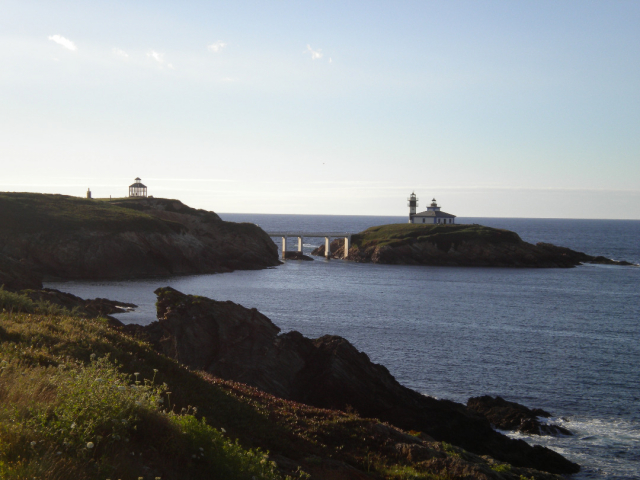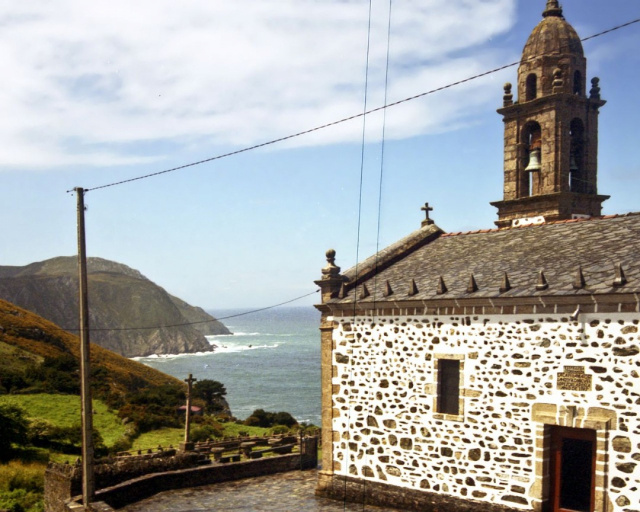Camiño do Mar: Everything you need to know about this alternative route to the Camino del Norte
The Camiño do Mar is an alternative route to the Northern Way to continue along the Cantabrian and Atlantic coast.
What is the Camiño do Mar?
The pilgrimage to the city of Santiago de Compostela can start from different places in the Iberian Peninsula. The Northern Way unfolds when we reach Ribadeo, a municipality in the province of Lugo where we can start one of the most spectacular routes if we decide to do the Way of St. James. The Camiño do Mar is a variant of this popular route that follows the coastline from the Basque Country, covering a large part of the Galician Cantabrian coast.
The Northern Way, also known as the Coastal Way, starts in Irún (Guipúzcoa) and runs from east to west as far as Ribadeo. From the last mentioned town, the route moves away from the coast to head inland to find the Galician capital. The Camiño do Mar, however, continues along the coastline of the provinces of Lugo and part of A Coruña to reach the awaited Cathedral of Santiago de Compostela.
The Camiño do Mar is, then, an alternative route to the Northern Way to continue along the Cantabrian and Atlantic coast. The route starts in Ribadeo and passes through some of the most iconic places in Galicia, such as Viveiro and San Andrés de Teixido until it reaches Ferrol, where it links directly with the English Way to Santiago de Compostela.
Why choose the Camiño do Mar?
Although all routes to Santiago de Compostela offer unique experiences, the Camiño do Mar has some special features. Starting from Ribadeo, you begin to appreciate some of the best panoramic views of northern Spain. On the way west, pilgrims continue their journey along the Cantabrian coast until they reach Ferrol. Along the way, all kinds of mountainous and coastal landscapes are incorporated, making you feel part of nature from the very first kilometers.
But besides providing an enormous view where marine colors and abundant vegetation predominate during the journey, the Camiño do Mar is one of the most exciting and satisfying routes of the Camino de Santiago. Just as it is a challenge for pilgrims, it can also be positively valued as a passage through mythical places in Galician culture and tradition.
Stages of the Camiño do Mar
As it crosses a large part of the Cantabrian coast, most of the stages of this alternative route are quite long. The Camiño do Mar is considered one of the most complicated, both for its distance and for the challenge it poses to pilgrims, something that at the end of the Camino translates into infinite experiences that make one surpass oneself.
The Camiño do Mar has a route of about 275 kilometers that are divided into 12 different stages, among which we can find the most varied distances. The route starts in Ribadeo and continues through different municipalities of Galicia until it reaches Ferrol, where the route merges with the English Way to reach Santiago.
- Stage 1: Ribadeo - San Cosme de Barreiros (26.40 km)
- Stage 2: San Cosme de Barreiros - Fazouro (20.88 km)
- Stage 3: Fazouro - San Ciprian (23.31 km)
- Stage 4: San Ciprian - Viveiro (28.31 km)
- Stage 5: Viveiro - O Vicedo (21.41 km)
- Stage 6: O Vicedo - Porto de Espasante (17.42 km)
- Stage 7: Porto de Espesante - Cariño (27.40 km)
- Stage 8: Cariño - San Andrés de Teixido (21.20 km)
- Stage 9: San Andrés de Teixido - Cedeira (16.79 km)
- Stage 10: Cedeira - Valdoviño (19.16 km)
- Stage 11: Valdoviño - Covas (23.41 km)
- Stage 12: Covas - Ferrol (27.65 km)
What to see along the Camiño do Mar
If the stages along the coast are already a spectacular experience, this route offers us much more to see in each section. Without going any further, starting in Ribadeo seeing the beach of the Cathedrals is a luxury. If you want to walk along the beach, you have to pay attention to the tides, because you can only walk at low tide. In addition, in summer you have to request an appointment (free) to visit it, because this way you avoid overcrowding.
In the stage that leads to Barreiros we find the chapel of the Virgen del Pilar in Espiñeira, a parish of Foz. It is a simple but harmonic building, built in the 16th century, where the town festivals are celebrated today. Its portal with a semicircular arch and a rose window carved in the shape of a car stand out.
Further on, on the way to Esteiro, we find the ruins of the monastery of Santo Tirso, in Portocelo. Here we can walk through two very different historical enclaves, always with beautiful views of the sea. At the tip of Mechiluíde are the remains of a fort dating from 1200 BC. The layout of two walls and one of the moats is preserved. You can also walk among the ruins of the hermitage of San Tirso, which was founded in the 8th century to spread Christianity at the time of the Islamic occupation.
In the Camiño do Mar there are many hospitals for pilgrims, only in Viveiro there were six. One of them, that of Santa Ana in Celeiro, is still preserved today. It was founded in the 16th century and underwent numerous reforms in the following two centuries that increased it until it was converted into a chapel. It blends in with the rest of the street, rather than being in a square, but it makes sense when you think that it was part of the hospital.
A must-see on this route is the sanctuary of San Andrés de Teixido. In addition to the image of a postcard of the church by the sea, it has a very special meaning for Christianity. It is a 16th-century maritime Gothic-style church with a Baroque altar surrounded by the offerings of all those who pass by. It is an essential stop because, as the saying goes, "people go to San Andrés de Teixido as dead if they haven't alive".
Once you arrive in Ferrol and before resuming the route along the English Way, you can visit the Co-Cathedral of San Julián. It was built in the 18th century to replace the original church, which had been demolished. It is a paradigm of the neoclassical style, with its balanced and classical composition and its Greek cross plan. Inside, the altar in polychrome marble and gold leaf stands out. It was given the title of Co-Cathedral in 1959, next to the Mondoñedo Cathedral.
There are many monuments and places to mention, since each of the routes of the Camino de Santiago is very extense. The only way to check it out and get to know everything this Camino has to offer is by preparing your backpack and putting on your boots to walk it.
Routes
Blog
 How to get to Sarria to do the Camino de Santiago
How to get to Sarria to do the Camino de Santiago
 Descubre la magia del Camino de Santiago Portugués por la costa
Descubre la magia del Camino de Santiago Portugués por la costa
 5 tours culturales que puedes hacer en Galicia si decides hacer un alto en el camino
5 tours culturales que puedes hacer en Galicia si decides hacer un alto en el camino
 Doing the Camino de Santiago in June: What you should know?
Doing the Camino de Santiago in June: What you should know?
Information
Points of interest
Cities & Towns | Hostels | Lodgings | Restaurants | Saddlery | Doctors | Points of interest | Bikes workshop
Contact us | Privacy policy | Cookies policy | | Terms of use | Authorship | Web Map | Consentimiento
© Copyright LA VOZ DE GALICIA S.A. Polígono de Sabón, Arteixo, A CORUÑA (ESPAÑA) Inscrita en el Registro Mercantil de A Coruña en el Tomo 2438 del Archivo, Sección General, a los folios 91 y siguientes, hoja C-2141. CIF: A-15000649
Developed and managed byHyliacom

